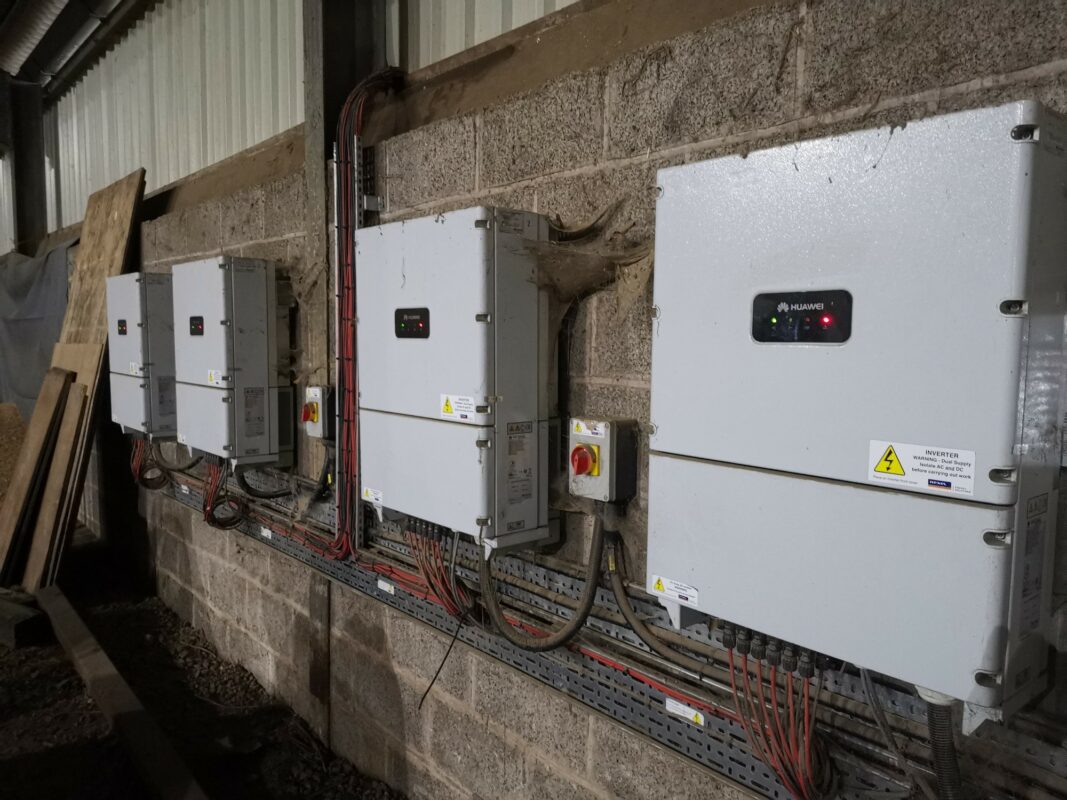
Manor Farm, where RWG Consulting was brought in to deal with cable and string faults. Image: RWG Consulting.
Set up in 2010, RWG Consulting is a specialist in remote metering and monitoring of solar PV assets, utilising software to provide a “bullet proof oversight solution”.
A decade in, and managing consultant Will Grafton has seen the impact of the solarcoaster first hand, with “too many companies having been affected very badly by policy u-turns”. This has had a significant impact on operations and maintenance (O&M), with systems often left underperforming due to a lack of long-term monitoring.
Speaking to Solar Power Portal, Grafton explained what causes systems to underperform, and how to get the most out of older systems.
How are the oldest solar installations coping and what tend to be the biggest struggles?
Solar PV is an extremely reliable technology, but like all electrical installations, problems can and do arise with older systems. Often, these installations fall outside warranty periods and the original installer may no longer even be in business. In the light of lots of ups and mostly downs in government policy towards solar PV there are a considerable number of systems on farms, businesses and public buildings all over the UK that are effectively “solar orphans,” not providing the return on investment that they should and could.
These systems now need some long overdue TLC to maximise output and therefore return on investment. Common faults are poor reliability of early inverters, faulty isolators, breakers tripping, even rats in the roof damaging cabling, and other issues, including systems that had never actually been turned on since installation.
Why do you think underperforming aspects of solar installations often go undetected?
The main problem is almost always failure to monitor output from older systems. It is hardly surprising that solar owners often miss “minor” issues, but given the longevity of the technology, those oversights can soon add up to a costly mistake over the working lifetime of the installation.
Solar PV is a fundamentally sound investment, but it is not “fit and forget”. It does need someone who knows what they are doing to keep an eye on annual performance, particularly as systems age and equipment can start to break down. Problems arise often from systems installed with no coherent strategy for O&M and ongoing support, and even when those essential O&M services are in place at the beginning, that is of no help to the solar PV owner if the original installation company then goes out of business.
The frustration is that often systems are underperforming due to problems with minor low-cost items such as isolators or breakers, but not picking up these issues early can lead to significant loss of revenue in the long-term.

Inverters at Manor Farm. Image: RWG Consulting.
What can companies do to ensure the best performance from their older assets?
Many faults develop typically over the life of the PV system, but the good news is that most can be nipped in the bud. Having done so, an ongoing, long-term monitoring and review system will help to ensure that the system remains in optimum condition, and further problems are avoided.
Are there many challenges created by warranty limitations?
Yes, sadly the warranties are often difficult to claim on as they insist on onerous hoop jumping and meticulous fault finding with technology that may have not been working properly from the outset. Downloading onto memory sticks using processes that half the time, do not work. Everything must line up and be perfect before a claim arises and it is often easier to junk old inverters and start again than claim. Also, poor access can hamper things as inverters can be high up on walls out of reach, making it extremely difficult to do safe fault finding.
What can companies do when installing new solar to ensure it doesn’t fall into the same O&M traps?
All PV owners should ensure that they have a proper and realistic budget for ongoing operations. They should make sure they put in place a process to do the extra regular checking, either in house or outsource it to someone who can look after it properly for 20+ years. They need to ensure a good audit trail of warranties, use major manufacturers and be prepared to go the extra mile to ensure that, if things do go wrong, they can claim on the warranty.

